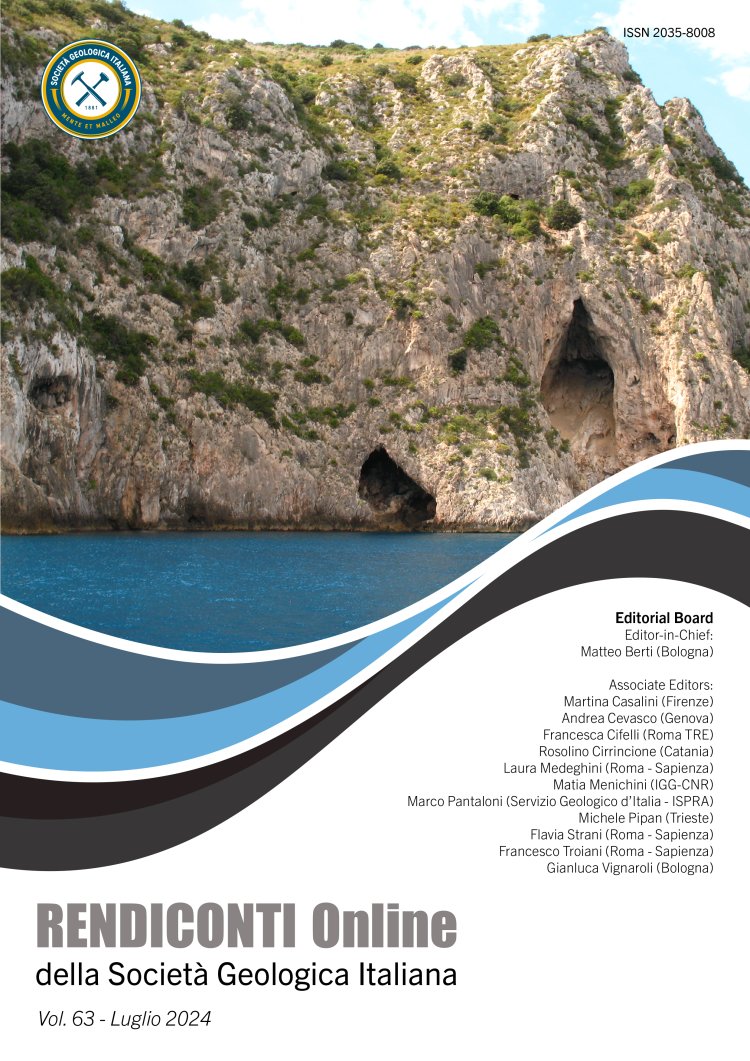
Magnetic susceptibility analysis of the archeological clastic succession at Grotta dei Santi (Grosseto, Italy): a palaeoclimatic and palaeoenvironmental perspective
Allegra Burgassi1, Vincenzo Spagnolo1,2, Adriana Moroni1,2, Francesco Boschin1,2 & Ivan Martini1
1Dipartimento di Scienze Fisiche, della Terra e dell'Ambiente, Università di Siena, via Laterina 8, 53100 Siena, Italy.
2Centro Studi sul Quaternario (CeSQ), Via Nuova dell'Ammazzatoio 7, I, 52037 Sansepolcro (Arezzo, Italy).
Corresponding author e-mail: ivan.martini@unisi.it
Volume: 63/2024
Pages: 60-66
Abstract
This work presents the preliminary results of a high-resolution magnetic susceptibility analysis performed in the clastic sequence exposed at Grotta dei Santi, one important Mousterian site in Italy. Magnetic susceptibility (χ) measures how much material is magnetised in an applied magnetic field. In clastic sequences in caves, magnetic susceptibility has been considered a good palaeoclimate proxy because χ fluctuations are also influenced by pedogenesis, which often is caves’ primary source of sediments.
The results have been combined with other independent proxies, such as faunal remains and radiocarbon dates. The data highlight that the lower portion of the succession is characterised by χmass fluctuations that fit well with supposed climate changes recorded during sediment accumulation. Contrariwise, the upper part of the succession is characterised by extremely high χmass values due to diffuse contamination by coarse-grained magnetite, which obliterates the palaeoclimate signal. Such granules are incompatible with infiltration processes, and regional considerations allow us to hypothesize their origin as connected with the erosion and re-deposition within the cave of nearshore coastal deposits.
Keywords
Get Full Text